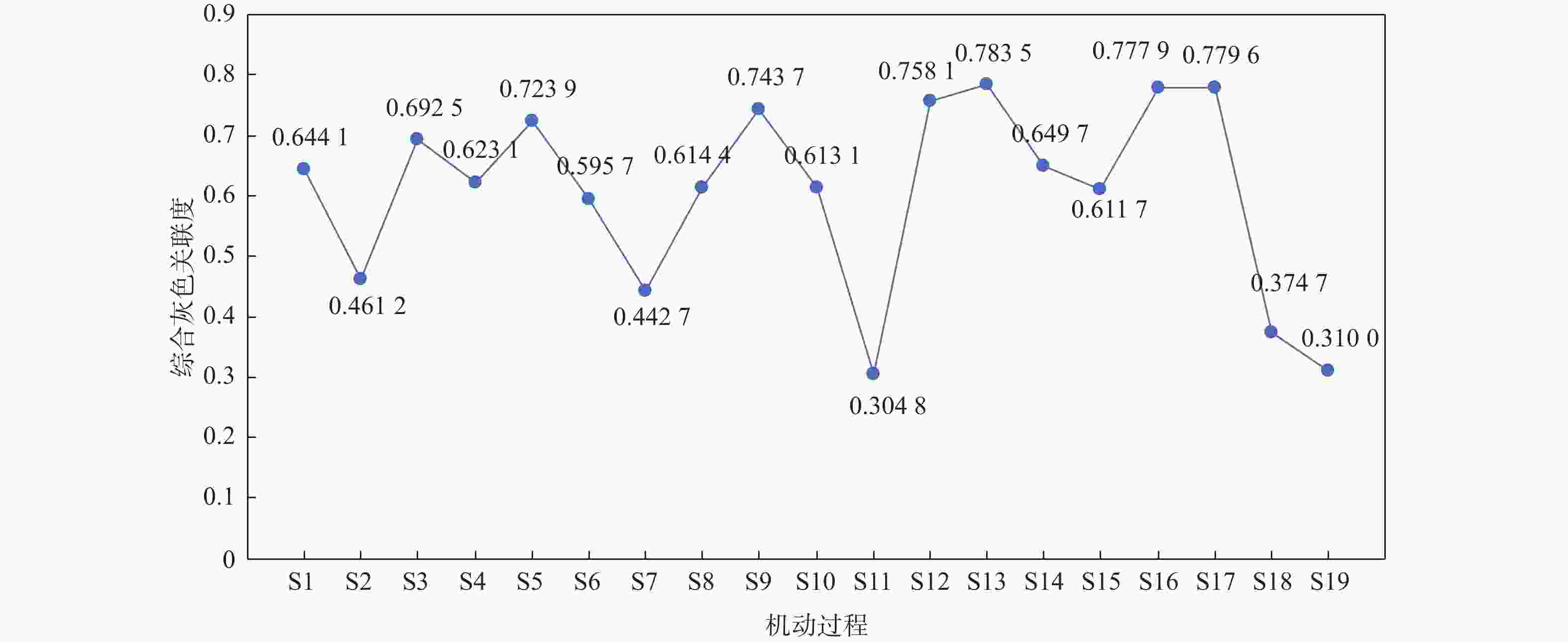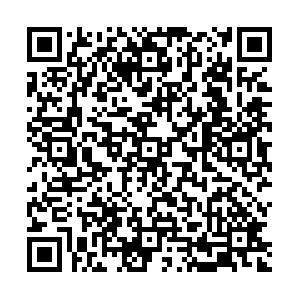Effectiveness evaluation method for earth observation satellite attitude control system
-
摘要:
卫星系统效能评估问题,是卫星提高工作效率和卫星方案优化设计的基础。以对地观测卫星姿态控制系统作为效能评估的对象,通过对卫星的任务需求进行分析,建立对地观测卫星姿态控制系统效能评估指标体系;基于灰色关联分析相关理论,引入熵权法计算指标权重,建立效能评估模型,计算得到综合灰色关联度,实现卫星姿态控制系统效能评估;通过数据验证所建体系具有可实现性与实用性。
Abstract:The problem of satellite system effectiveness assessment is the basis of satellite efficiency improvement and satellite program optimization design. Taking the attitude control system for earth observation satellite attitude control system as the object of effectiveness assessment, an analysis of satellite requirements is conducted to establish the effectiveness assessment index system for the earth observation satellite attitude control system. Based on the theory related to gray correlation analysis, the entropy weight method was introduced to calculate the index weights, and the effectiveness assessment model was established to calculate the comprehensive gray correlation degree, and realize the effectiveness assessment of satellite attitude control system. The realizability and practicality of the established system were verified through data.
-
表 1 机动过程效能指标
Table 1. Motorized process effectiveness indicators
编号 姿态角指向精度/(°) 指向稳定度/((°)·s−1) 机动角速度/((°)·s−1) 姿态控制能耗/J 姿态控制响应时间/s 姿态角确定精度/(°) 最大侧摆角/(°) S1 0.138 7 0.008 5 0.885 2 0.122 8 9.400 0 0.080 0 31.263 7 S2 0.133 1 0.011 5 0.819 6 0.157 3 14.200 0 0.080 0 31.263 7 S3 0.109 8 0.009 4 0.950 8 0.117 5 9.400 0 0.080 0 28.178 6 S4 0.088 1 0.017 7 0.852 4 0.074 7 11.600 0 0.080 0 28.178 6 S5 0.149 2 0.008 5 0.918 0 0.076 8 8.800 0 0.080 0 31.253 4 S6 0.104 6 0.010 3 0.918 0 0.162 6 12.000 0 0.080 0 32.735 2 S7 0.124 8 0.017 8 0.918 0 0.157 3 7.200 0 0.080 0 32.735 2 S8 0.109 5 0.018 1 1.016 3 0.116 5 6.200 0 0.080 0 31.255 4 S9 0.098 8 0.013 7 1.049 1 0.105 2 5.400 0 0.080 0 31.263 7 S10 0.105 1 0.007 5 1.180 3 0.169 7 10.200 0 0.080 0 31.263 7 S11 0.121 5 0.054 6 1.016 3 0.131 7 14.000 0 0.080 0 30.252 4 S12 0.086 2 0.010 9 0.819 6 0.050 6 8.200 0 0.080 0 31.263 7 S13 0.085 3 0.009 1 0.950 8 0.105 8 6.200 0 0.080 0 31.282 7 S14 0.063 4 0.015 2 0.918 0 0.105 7 12.400 0 0.080 0 31.250 0 S15 0.106 6 0.023 6 0.983 5 0.092 3 7.400 0 0.080 0 31.243 0 S16 0.075 3 0.008 5 0.655 7 0.044 8 5.200 0 0.080 0 31.280 0 S17 0.113 6 0.006 0 0.885 2 0.077 2 5.200 0 0.080 0 31.280 0 S18 0.159 6 0.027 1 0.918 0 0.116 1 9.000 0 0.080 0 32.674 2 S19 0.275 0 0.013 8 0.918 0 0.325 7 4.600 0 0.080 0 32.674 2 表 2 效能指标标准化结果
Table 2. Standardized results of performance indicators
编号 姿态角指向精度 指向稳定度 机动角速度 姿态控制能耗 姿态控制响应时间 姿态角确定精度 最大侧摆角 S1 0.7420 1.0000 0.7704 0.7720 0.7067 0.8000 0.9080 S2 0.7793 0.9250 0.6392 0.4270 0.3867 0.8000 0.9080 S3 0.9347 1.0000 0.9016 0.8250 0.7067 0.8000 0.5223 S4 1.0000 0.6150 0.7048 1.0000 0.5600 0.8000 0.5223 S5 0.6720 1.0000 0.8360 1.0000 0.7467 0.8000 0.9067 S6 0.9693 0.9850 0.8360 0.3740 0.5333 0.8000 1.0000 S7 0.8347 0.6100 0.8360 0.4270 0.8533 0.8000 1.0000 S8 0.9367 0.5950 1.0000 0.8350 0.9200 0.8000 0.9069 S9 1.0000 0.8150 1.0000 0.9480 0.9733 0.8000 0.9080 S10 0.9660 1.0000 1.0000 0.3030 0.6533 0.8000 0.9080 S11 0.8567 0.0000 1.0000 0.6830 0.4000 0.8000 0.7816 S12 1.0000 0.9550 0.6392 1.0000 0.7867 0.8000 0.9080 S13 1.0000 1.0000 0.9016 0.9420 0.9200 0.8000 0.9103 S14 1.0000 0.7400 0.8360 0.9430 0.5067 0.8000 0.9063 S15 0.9560 0.3200 0.9670 1.0000 0.8400 0.8000 0.9054 S16 1.0000 1.0000 0.3114 1.0000 0.9867 0.8000 0.9100 S17 0.9093 1.0000 0.7704 1.0000 0.9867 0.8000 0.9100 S18 0.6027 0.1450 0.8360 0.8390 0.7333 0.8000 1.0000 S19 0.0000 0.8100 0.8360 0.0000 1.0000 0.8000 1.0000 表 3 综合评估结果
Table 3. Comprehensive assessment results
编号 最优序列关联度 最差序列关联度 综合灰色关联度 S13 0.910 9 0.478 8 0.783 5 S17 0.902 0 0.479 6 0.779 6 S16 0.935 4 0.499 9 0.777 9 S12 0.875 0 0.494 2 0.758 1 S9 0.834 0 0.489 7 0.743 7 S5 0.815 2 0.503 4 0.723 9 S3 0.774 9 0.516 3 0.692 5 S14 0.727 5 0.534 2 0.649 7 S1 0.703 6 0.522 9 0.644 1 S4 0.715 1 0.556 2 0.623 1 S8 0.668 1 0.529 3 0.614 4 S10 0.720 9 0.572 7 0.613 1 S15 0.709 4 0.565 2 0.611 7 S6 0.696 6 0.573 9 0.595 7 S2 0.561 0 0.606 4 0.461 2 S7 0.522 8 0.586 6 0.442 7 S18 0.502 4 0.649 0 0.374 7 S19 0.502 7 0.750 0 0.310 0 S11 0.481 5 0.727 2 0.304 8 表 4 评估结果对比
Table 4. Comparison of assessment results
灰色关联分析 优劣解距离法 模糊综合评价 0.7835(S13) 0.9464(S13) 0.9717(S13) 0.7796(S17) 0.9255(S17) 0.9711(S17) 0.7779(S16) 0.8856(S9) 0.9593(S16) 0.7581(S12) 0.8811(S12) 0.9486(S12) 0.7437(S9) 0.8370(S5) 0.9354(S9) 0.7239(S5) 0.8360(S16) 0.9211(S5) 0.6925(S3) 0.8351(S3) 0.9058(S3) 0.6497(S14) 0.7981(S1) 0.8702(S1) 0.6441(S1) 0.7813(S14) 0.8672(S14) 0.6231(S4) 0.7467(S8) 0.8389(S8) 0.6144(S8) 0.7314(S4) 0.8349(S4) 0.6131(S10) 0.6635(S6) 0.8017(S15) 0.6117(S15) 0.6548(S15) 0.7987(S10) 0.5957(S6) 0.6533(S10) 0.7959(S6) 0.4612(S2) 0.6289(S2) 0.7408(S2) 0.4427(S7) 0.5991(S7) 0.7201(S7) 0.3747(S18) 0.5165(S18) 0.6557(S18) 0.3100(S19) 0.4686(S11) 0.5957(S11) 0.3048(S11) 0.4300(S19) 0.5649(S19) 注:(Si)表示机动过程。 -
[1] GUO H D, FU W X, LIU G. Chinese earth observation satellites[C]//Proceedings of the Scientific Satellite and Moon-Based Earth Observation for Global Change. Berlin: Springer, 2019: 189-243. [2] RIVETT C, PONTECORVO C. Improving satellite surveillance through optimal assignment of assets: DSTO-TR-1488[R]. Canberra: Australian Government Department of Defense, 2003: 1-36. [3] BOLKUNOV A I, KRASIL’SHIKOV M N, MALYSHEV V V. Comprehensive assessment of the effectiveness of navigation satellite systems[J]. Journal of Computer and Systems Sciences International, 2022, 61(3): 430-446. doi: 10.1134/S1064230722030030 [4] SHAO R R, FANG Z G, TAO L Y, et al. A comprehensive G-Lz-ADC effectiveness evaluation model for the single communication satellite system in the context of poor information[J]. Grey Systems:Theory and Application, 2022, 12(2): 417-461. doi: 10.1108/GS-03-2021-0030 [5] 易山. 基于不确定性的遥感卫星系统效能评估[D]. 哈尔滨: 哈尔滨工业大学, 2021: 10-35.YI S. Effectiveness evaluation of remote sensing satellite system based on uncertainty[D]. Harbin: Harbin Institute of Technology, 2021: 10-35(in Chinese). [6] KAZAKEVICIUTE-JANUSKEVICIENE G, JANUSONIS E, BAUSYS R. Evaluation of the segmentation of remote sensing images[C]//Proceedings of the 2021 IEEE Open Conference of Electrical, Electronic and Information Sciences. Piscataway: IEEE Press, 2021: 1-7. [7] MUHURI A, GASCOIN S, MENZEL L, et al. Performance assessment of optical satellite-based operational snow cover monitoring algorithms in forested landscapes[J]. IEEE Journal of Selected Topics in Applied Earth Observations and Remote Sensing, 2021, 14: 7159-7178. doi: 10.1109/JSTARS.2021.3089655 [8] WANG Y X, ZHAO Y Y. A data-based performance evaluation method for aircraft attitude control system[C]//Proceedings of the 2021 40th Chinese Control Conference. Piscataway: IEEE Press, 2021: 6691-6696. [9] 闻新, 龙弟之, 王俊鸿, 等. 基于1D-CNN的卫星姿态控制系统故障诊断方法[J]. 兵工自动化, 2020, 39(7): 1-6.WEN X, LONG D Z, WANG J H, et al. Fault diagnosis method of satellite attitude control system based on 1D-CNN[J]. Ordnance Industry Automation, 2020, 39(7): 1-6(in Chinese). [10] 钱晨. 基于遥测数据的卫星姿态控制系统故障检测方法[D]. 杭州: 浙江大学, 2021: 11-59.QIAN C. Satellite attitude control system fault detection method based on telemetry data[D]. Hangzhou: Zhejiang University, 2021: 11-59(in Chinese). [11] 肖磊. 基于星敏感器和陀螺组合的卫星姿态确定方法研究[D]. 长春: 中国科学院大学(中国科学院长春光学精密机械与物理研究所), 2021: 9-39.XIAO L. Research on satellite attitude determination method based on the combination of star-sensor and gyroscope[D]. Changchun: Changchun Institute of Optics, Fine Mechanics and Physics, Chinese Academy of Sciences, 2021: 9-39(in Chinese). [12] LIU S F, IIN Y. Grey Systems: Theory and application[M]. Berlin: Springer, 2010: 44-45. [13] 黄乾坤, 吴娅辉. 最大熵原理及改进方法的研究现状[J]. 计测技术, 2022, 42(1): 9-17.HUANG Q K, WU Y H. Research status of the maximum entropy principle and improved methods[J]. Metrology & Measurement Technology, 2022, 42(1): 9-17(in Chinese). [14] 郑天芳, 曲娜, 张帅, 等. 基于AHP-熵权法的高层建筑电气火灾风险评价[J]. 沈阳航空航天大学学报, 2022, 39(1): 69-76.ZHENG T F, QU N, ZHANG S, et al. Electrical fire risk assessment of high-rise buildings based on AHP-entropy weight method[J]. Journal of Shenyang Aerospace University, 2022, 39(1): 69-76(in Chinese). [15] XIAO X P, GUO H. Optimization method of grey relation analysis based on the minimum sensitivity of attribute weights[C]//Proceedings of the Advances in Grey Systems Research. Berlin: Springer, 2010: 177-189. [16] 东亚斌, 段志善. 灰色关联度分辨系数的一种新的确定方法[J]. 西安建筑科技大学学报(自然科学版), 2008, 40(4): 589-592.DONG Y B, DUAN Z S. A new determination method for identification coefficient of grey relational grade[J]. Journal of Xi’an University of Architecture & Technology (Natural Science Edition), 2008, 40(4): 589-592(in Chinese). [17] 李旭东. 基于气浮台的航天器姿轨控地面模拟系统关键技术研究[D]. 哈尔滨: 哈尔滨工业大学, 2020: 9-25.LI X D. Research on key technologies of spacecraft attitude and orbit control ground simulation system based on air float platform[D]. Harbin: Harbin Institute of Technology, 2020: 9-25(in Chinese). -







 下载:
下载:








